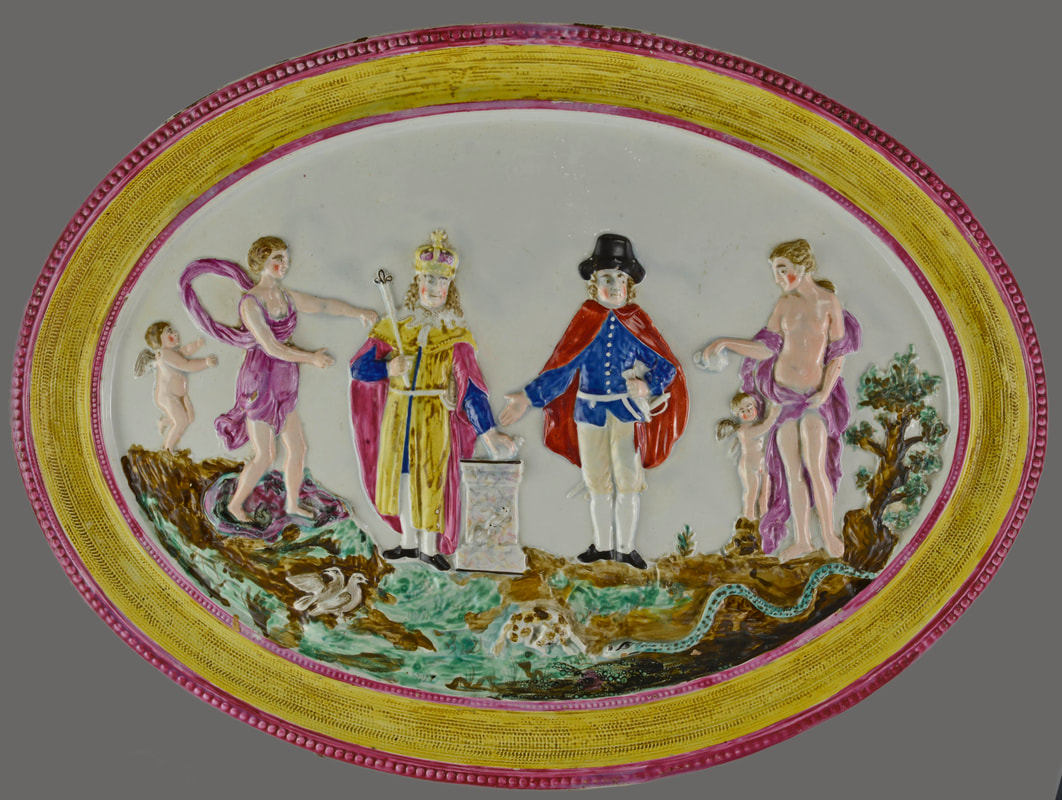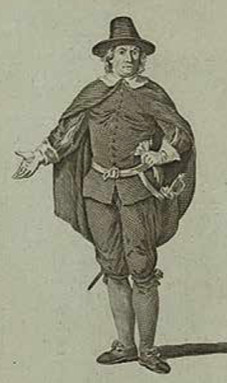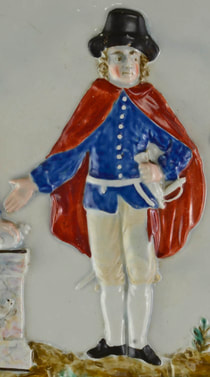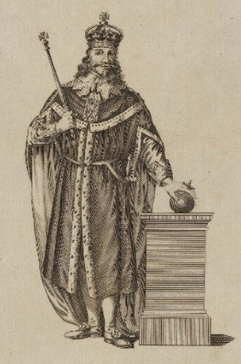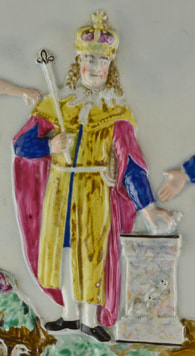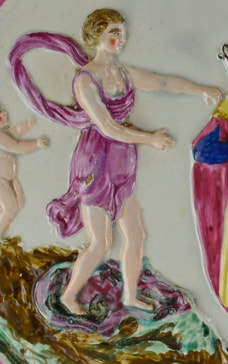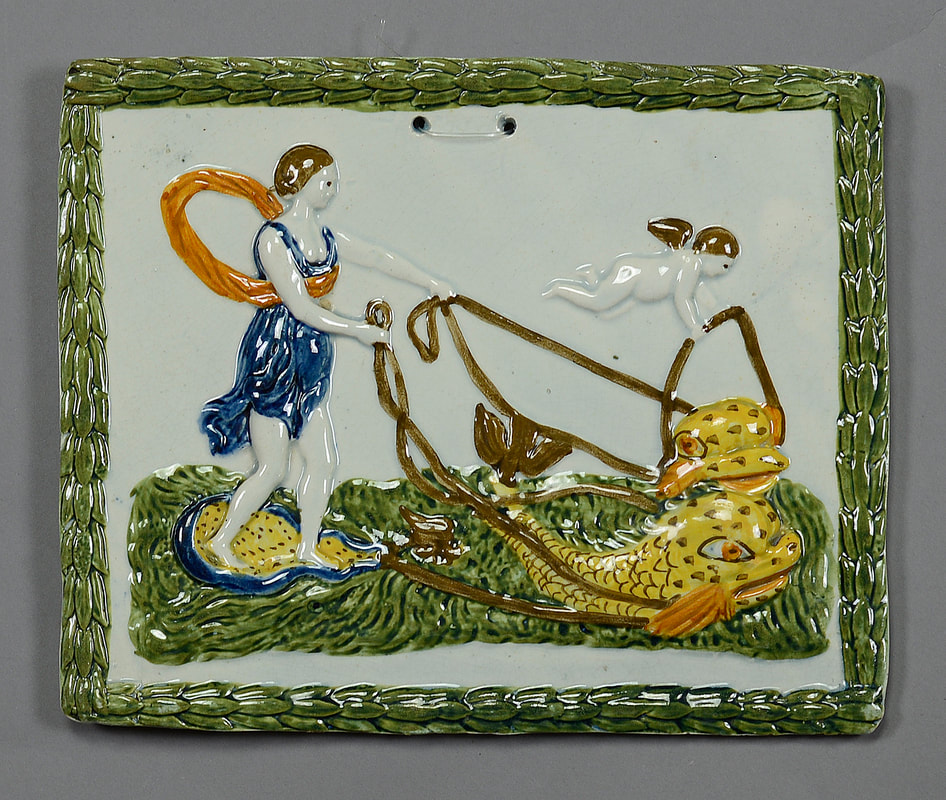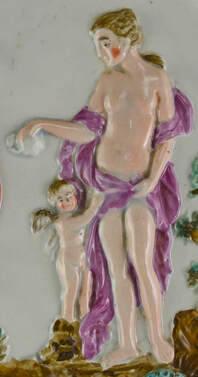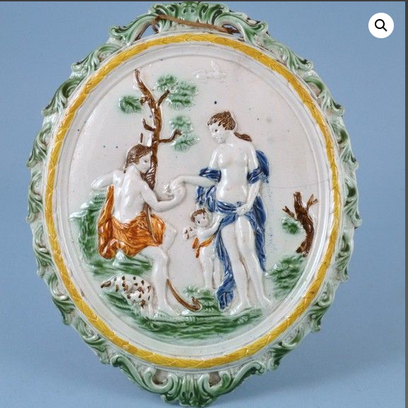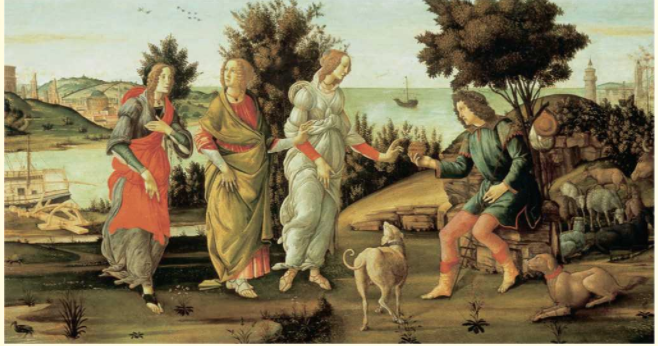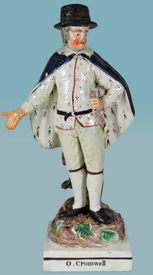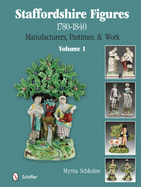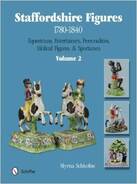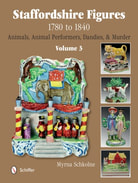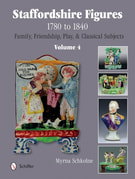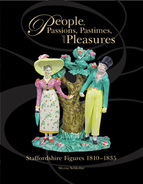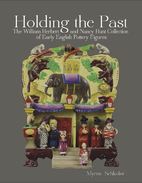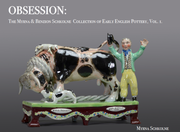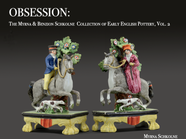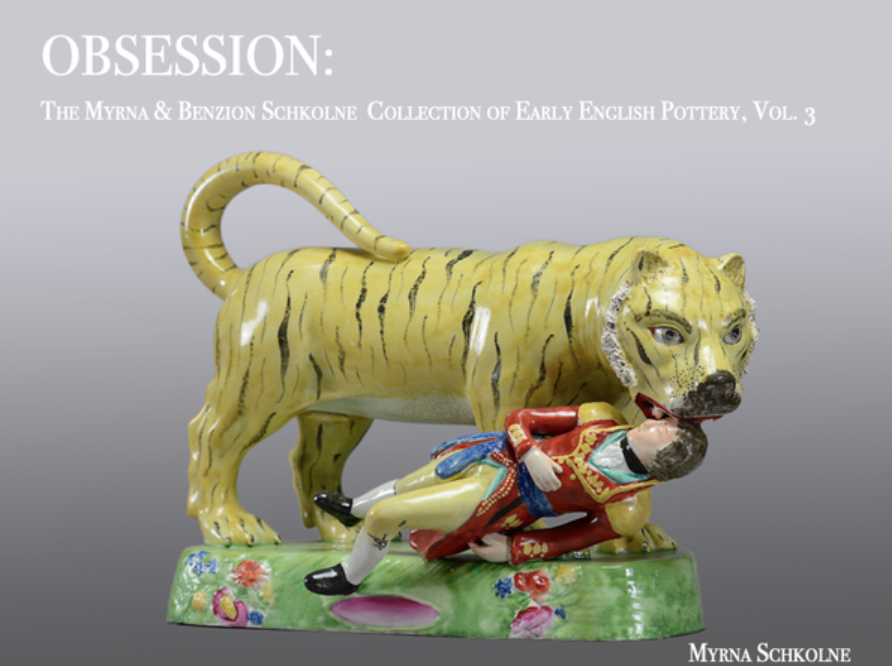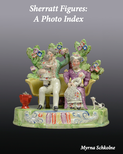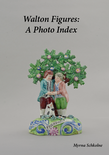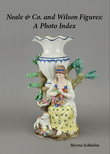A plaque in a blog devoted to figures may surprise you, but plaques with relief figural forms are, to my mind, figures too. I find them particularly gorgeous because light dances across their glazed flat surfaces in a way that just is not possible on conventional figures. And when the plaque is as large as this one, the result is mesmerizing.
Each plaque, like each figure, tells a story, but this plaque is a brain teaser that raises numerous questions. Why give Cromwell a passing thought some 160 years after his death? When King Charles II reclaimed the throne his father had relinquished, he disinterred Cromwell’s body, publicly hanged and then beheaded it, and placed the head on a spike for all to see. But, as modern day protestors have yet to learn, you cannot erase history, and in time Staffordshire potters turned their attention to Cromwell and his ill-fated victim.
What probably got the potters’ creative juices flowing was this engraving of Cromwell after a drawing by Samuel Wale, the eighteenth century historical painter and book illustrator. It appeared in George Frederick Raymond’s “A New, Universal and Impartial History of England” that was first published in serial form in the late 1780s.
The figure on the left is the sea nymph Galatea. The raised scarf is the give-away because Galatea is routinely portrayed in art with a raised scarf. Her story goes like this: Galatea, fleeing from her jealous lover, travelled on the ocean in a shell drawn by sea creatures, and her scarf caught the wind and acted as a sail. On the plaque, Galatea, balancing on her shell, taps Charles on the shoulder, signaling the need to flee.
So the King, the man who usurped England’s throne, discord, and flight, all in one eyeful. This plaque packs a powerful punch.
PS:
For completeness, I add that small pair of underglaze decorated plaques in the Wolverhampton Museum & Art Gallery is illustrated in Lewis, Pratt Ware, pp. 114-115. One has a relief of Cromwell, another of King Charles. The plaques are not accessible on the museum's web site. I surmise that these little treasures, like so many others, are buried and forgotten in museum storage.
